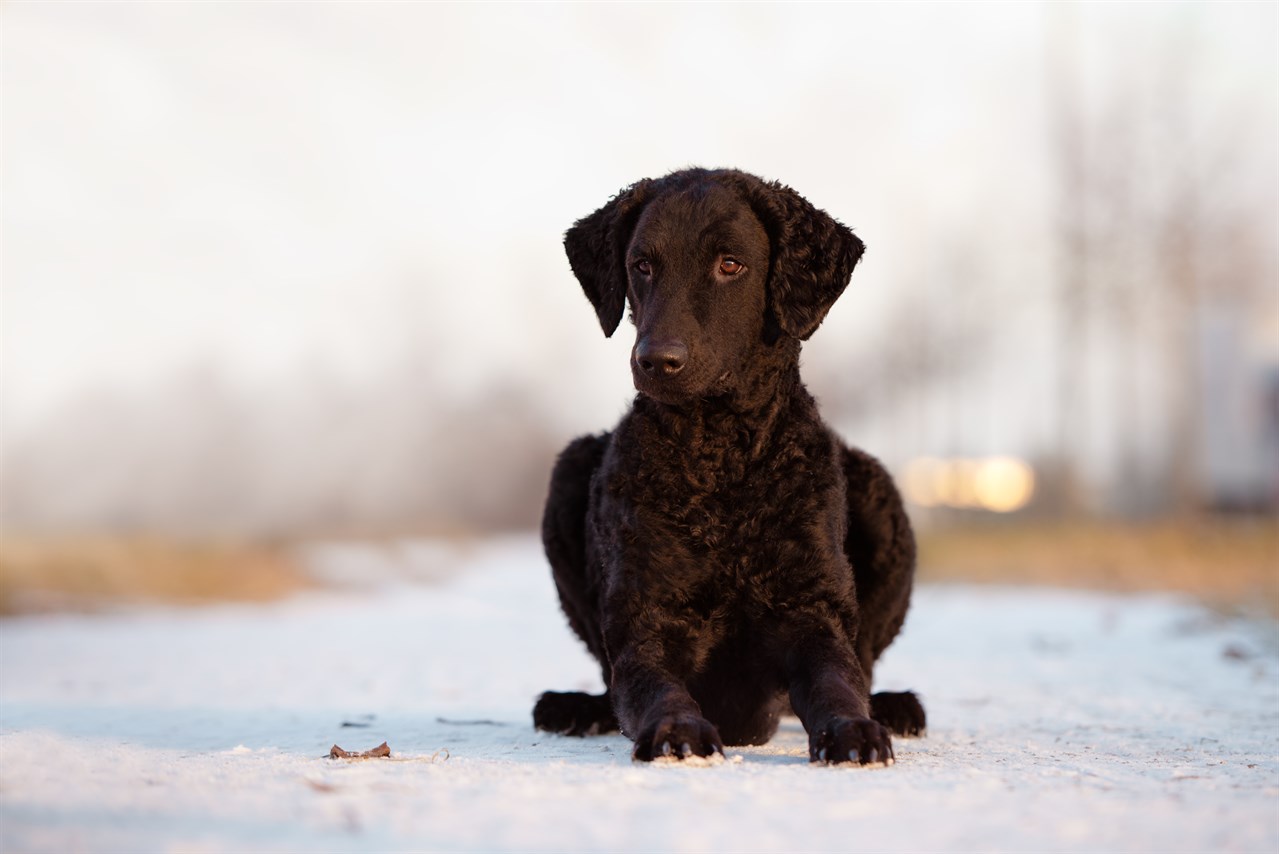Grooming and Maintenance Requirements of the Curly Coated Retriever

The Curly Coated Retriever's distinctive and tightly curled coat requires specific grooming and maintenance to keep it healthy, clean, and looking its best. Proper grooming is essential to prevent matting, promote the coat's water-resistant properties, and ensure the overall well-being of your Curly Coated Retriever.
Brushing
Regular brushing is necessary to prevent matting and remove loose hair from the curly coat. Brush your Curly Coated Retriever at least once a week, if not more, using a slicker brush or a pin brush. Be thorough but gentle to avoid damaging the curls or irritating the skin.
Bathing
Curly Coated Retrievers do not require frequent bathing, but occasional baths are essential to maintain the coat's cleanliness. Use a dog-specific shampoo and conditioner to preserve the coat's natural oils and water-resistant properties. Ensure that you rinse thoroughly to prevent residue buildup.
Coat Trimming
While not all Curly Coated Retrievers require coat trimming, some owners choose to have their dog's coat professionally clipped or trimmed. Trimming can help manage the length of the coat and prevent excessive matting. Discuss your grooming preferences with a professional groomer or breeder to determine if it's necessary for your dog.
Ears and Eyes
Regularly check and clean your dog's ears to prevent infections. Examine their eyes for signs of discharge or irritation. Keep the area around their eyes clean to prevent staining.
Nails
Trim your Curly Coated Retriever's nails as needed to prevent overgrowth and discomfort. Regular nail trimming is crucial for their comfort and mobility.
Teeth
Maintain good oral hygiene by brushing your dog's teeth regularly and providing dental treats or toys to help reduce plaque buildup.
Exercise and Diet
Proper nutrition and regular exercise contribute to the health of your dog's skin and coat. Ensure your Curly Coated Retriever receives a balanced diet and plenty of physical activity.
Socialisation
Frequent handling and grooming from an early age can help your dog become accustomed to the grooming process and reduce anxiety during grooming sessions.
Are Curly Haired Dogs Hypoallergenic?
Curly-haired dogs, including Curly Coated Retrievers, are not entirely hypoallergenic. While they may produce fewer allergens than breeds with longer or smoother coats, allergies to dogs are primarily triggered by proteins found in a dog's skin cells, urine, and saliva, rather than their hair.
People with allergies to pet dander may still react to curly-haired dogs, although the reaction may be less severe than with some other breeds. If you or someone in your household has allergies, it's essential to spend time with a Curly Coated Retriever before bringing one into your home to assess the level of sensitivity.
How Do You Take Care of a Curly Coat on a Dog?
Taking care of a curly coat on a dog requires regular grooming, including brushing, bathing, and occasional trimming. Brushing helps prevent matting and removes loose hair, while bathing maintains cleanliness and the coat's water-resistant properties. Trimming may be necessary for some dogs to manage coat length and prevent excessive matting.
Do Curly Coated Retrievers Need Haircuts?
Not all Curly Coated Retrievers need haircuts. Whether or not your dog needs a haircut depends on their specific coat and your preferences. Some owners choose to have their dog's coat professionally clipped or trimmed to manage its length and prevent matting. However, many Curly Coated Retrievers can maintain their coats with regular brushing and bathing, without the need for frequent haircuts. Discuss your grooming preferences with a professional groomer or breeder to determine what's best for your dog's individual needs.
Curly Coated Retriever puppies for sale
- Find Curly Coated Retriever puppies for sale in ACT
- Find Curly Coated Retriever puppies for sale in NSW
- Find Curly Coated Retriever puppies for sale in NT
- Find Curly Coated Retriever puppies for sale in QLD
- Find Curly Coated Retriever puppies for sale in SA
- Find Curly Coated Retriever puppies for sale in TAS
- Find Curly Coated Retriever puppies for sale in VIC
- Find Curly Coated Retriever puppies for sale in WA